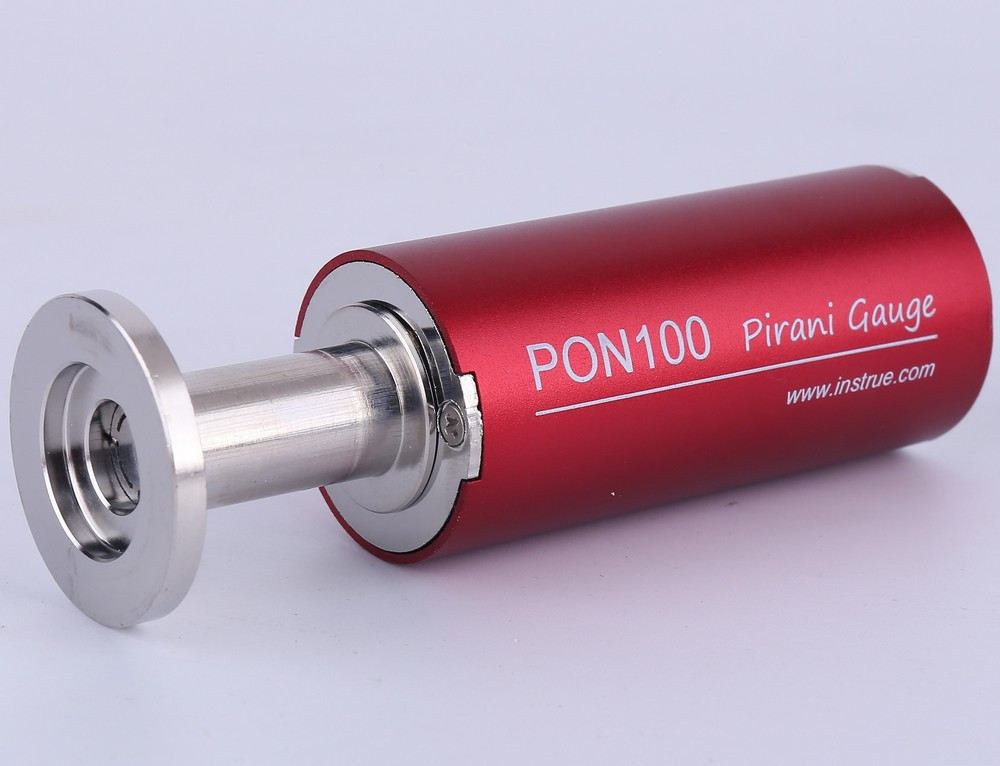The Pirani gauge is a reliable thermal conductivity gauge that is used to monitor pressures in vacuum systems. Marcello Pirani came up with the idea in 1906. By effectively using a resistance thermometer as the heated element, the Pirani gauge eliminates the use of a thermocouple to detect temperature (as in the thermocouple gauge).
In this article, you’ll learn the definition, applications, parts, diagram, working, advantages, and disadvantages of a Pirani gauge.

Read more: Understanding Pressure Gauge
Contents
What is a Pirani gauge?
A Pirani gauge is a reliable thermal conductivity gauge used in vacuum systems to measure low pressures. It works by suspending a hot metal wire in a tube and exposing it to a gas pressure medium. Thin tungsten, nickel, or platinum wires are used to make these hot metal wires.
It operates by monitoring the change in heat conductivity and using that information to calculate the system’s pressure. This gauge is appropriate for measuring pressures in the range of 0.1 to 100 pascals at very low pressures. Pirani gauge is used to measure pressure at low pressures and high vacuum pressure. it uses a plot graph based on the data obtained.
Diagram of a Pirani gauge:

Construction & working of a Pirani Gauge
A metal filament (typically platinum) is placed in a tube that is attached to the system whose vacuum is to be measured in the Pirani gauge. A ground glass joint or a flanged metal connector, sealed with an o-ring, is commonly used to make the connection. The filament is attached to an electrical circuit from which a pressure reading can be taken after calibration.
When an electric current travels through a conducting wire (platinum filament), it heats up. As the gas molecules clash with the wire and remove heat, this wire hung in gas will lose heat to the gas. The number of molecules present will decrease proportionally as the gas pressure is dropped (by the vacuum pumps), the conductivity of the surrounding media will decrease, and the wire will lose heat more slowly. Measuring heat loss is an indirect way of determining pressure.
Because the electrical resistance of a wire fluctuates with its temperature, resistance testing also indicates the wire’s temperature. The bridge is now used to determine the filament’s resistance change. When calibrated, the change in resistance of the Pirani gauge filament becomes a measure of the applied pressure.
The wire is kept at a constant resistance R in various systems by managing the current I that flows through it. A bridge circuit can be used to set the resistance. I2R power is applied to the wire, and the same power is applied to the gas. As a result, the current required to attain this equilibrium is a measure of the vacuum.
The gauge can handle pressures ranging from 0.5 Torr to 103 Torr. Because the thermal conductivity and heat capacity of the gas can alter the meter’s readout, the device may need to be calibrated before correct readings can be obtained. Other instruments, such as a Penning gauge, are used to measure lower pressures.
Read more: Understanding Diaphragm Pressure Gauge
Watch the video below to learn how Pirani Gauge works:
Advantages and disadvantages of a Pirani gauge
Advantages:
Below are the benefits of a Pirani gauge in its various applications.
- They’re tough and affordable.
- At low pressure, it produces reliable results.
- Pressure may be read at a distance.
- The Thermo coupler gauge, which is another sort of thermal conductivity gauge, is not recommended.
- It is preferable because it is 10 times faster and can monitor a larger range of pressures.
Read more: Understanding Bourdon Pressure Gauge
Disadvantages:
Despite the advantages of a Pirani gauge, some limitations still occur. Below are the disadvantages of a Pirani gauge in its various applications.
- Pirani gauge must be examined on a regular basis.
- Different gases must be used to calibrate the Pirani gauge.
- Its operation necessitates the use of electricity.
Conclusion
A Pirani gauge is a reliable thermal conductivity gauge used in vacuum systems to measure low pressures. It works by suspending a hot metal wire in a tube and exposing it to a gas pressure medium. Thin tungsten, nickel, or platinum wires are used to make these hot metal wires. That is all for this article, where the definition, applications, parts, diagram, working, advantages, and disadvantages of Pirani gauge are been discussed.
I hope you learn a lot from the reading, if so, kindly share with other students. Thanks for reading, see you around!
Read more: Understanding a Pressure Relief Valve
